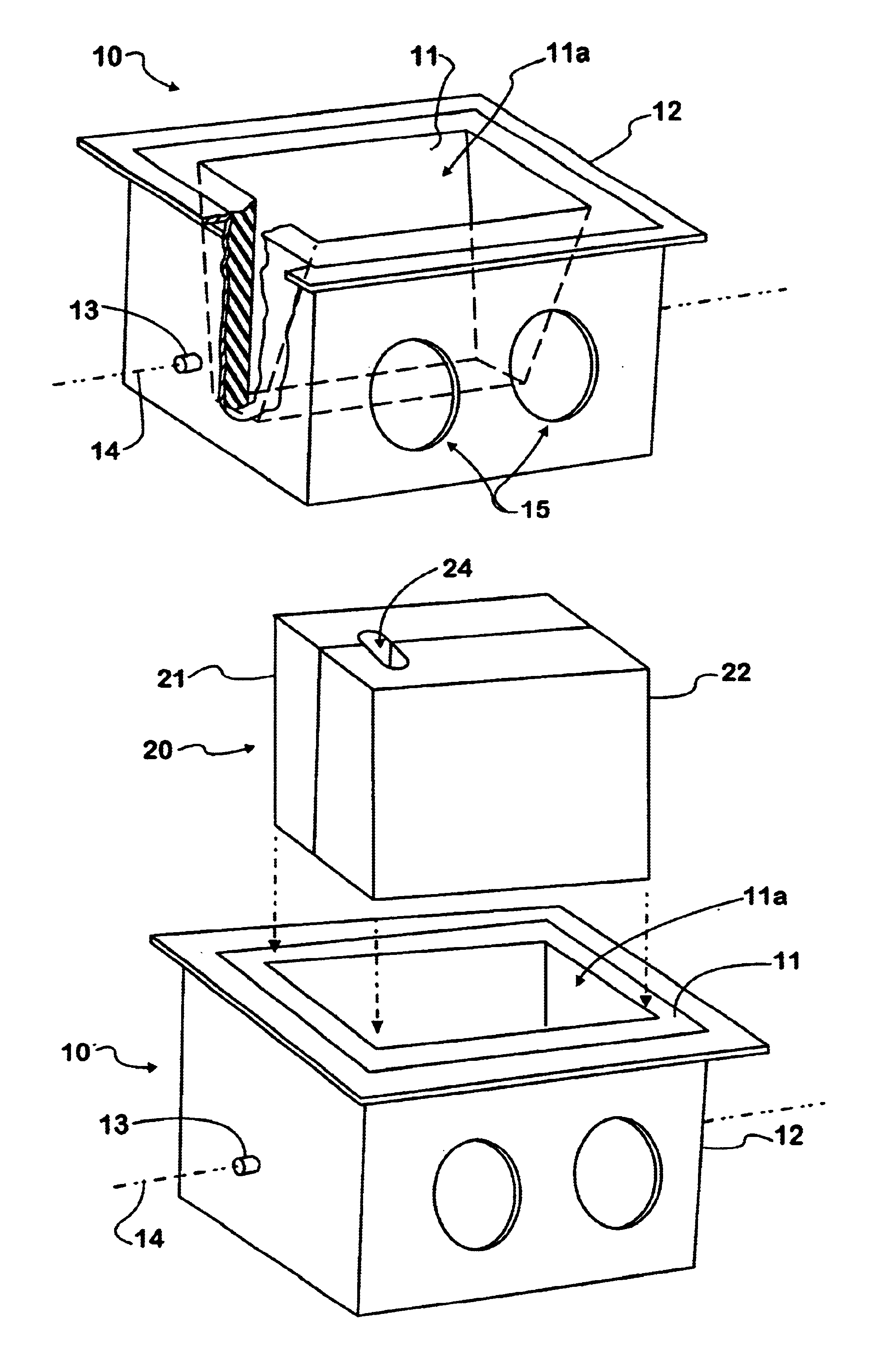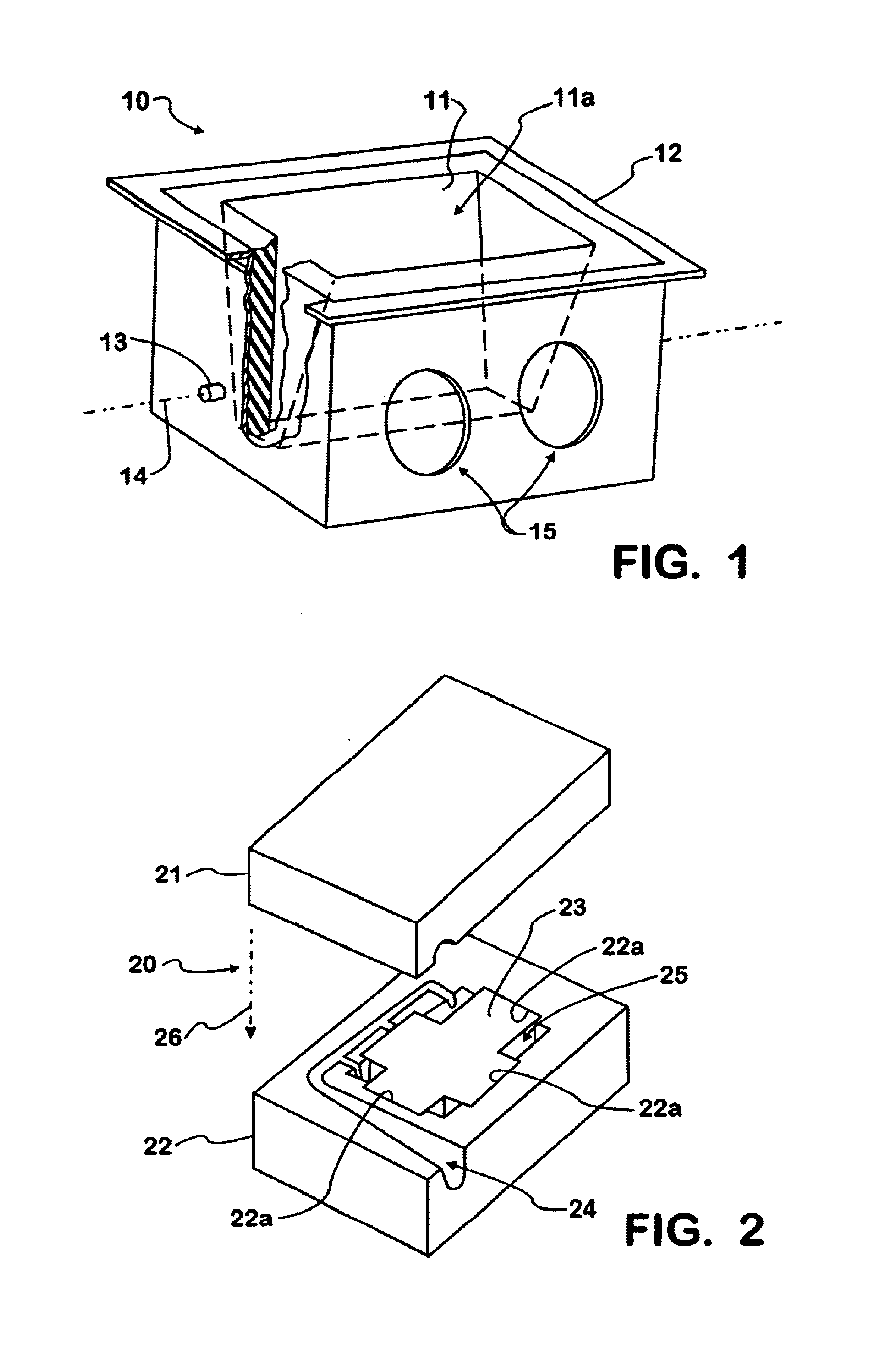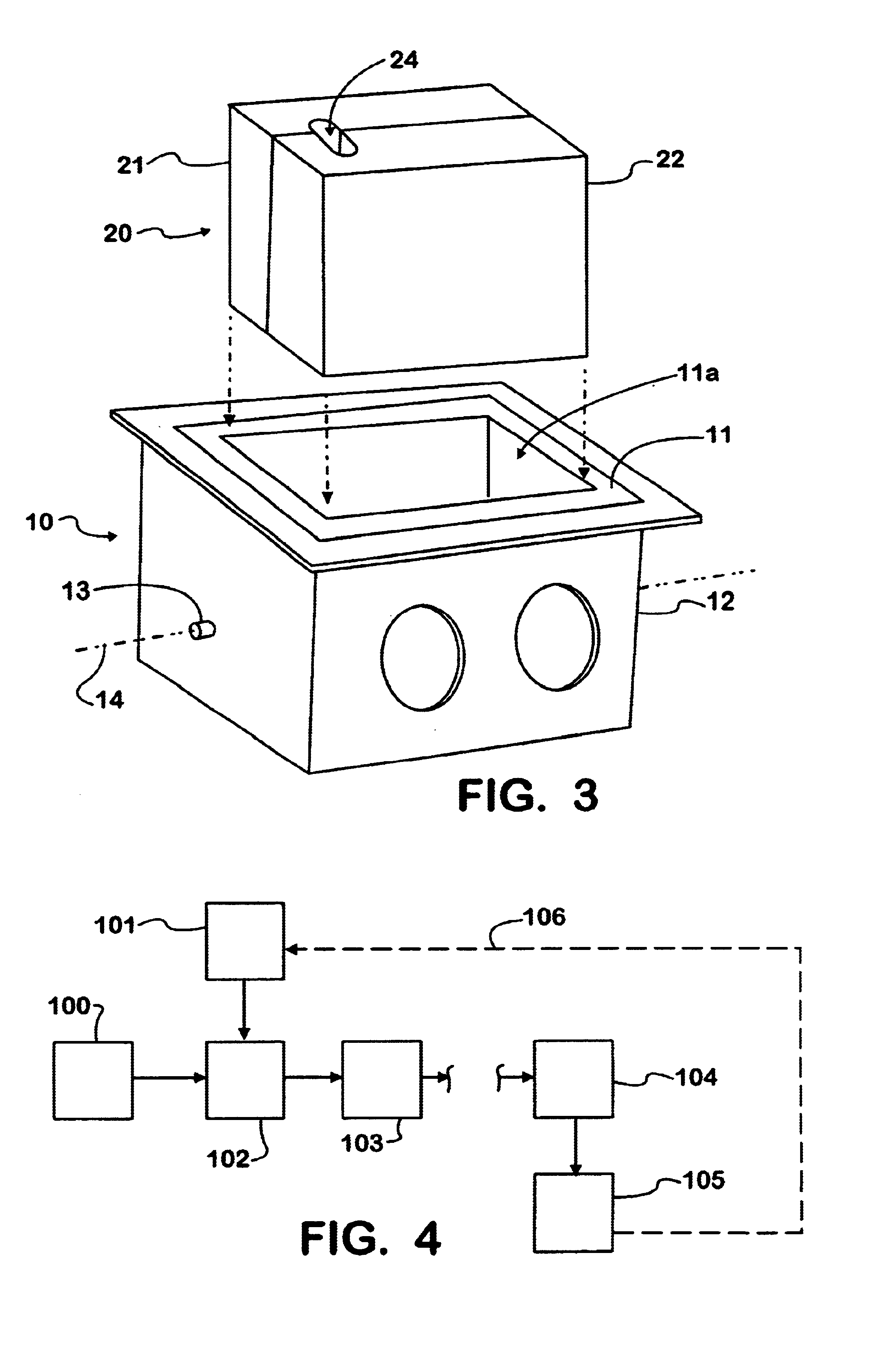Casting method and apparatus
- Summary
- Abstract
- Description
- Claims
- Application Information
AI Technical Summary
Benefits of technology
Problems solved by technology
Method used
Image
Examples
Embodiment Construction
[0026]FIG. 1 is a perspective view of one embodiment of a mold-core assembly carrier 10 used in the process illustrated in the block diagram of FIG. 4. As illustrated in FIG. 1, the carrier 10 for the mold-core assembly may include a liner 11, formed from a castable refractory material such as the refractory materials used to line the furnaces of iron smelting ovens. Such a refractory liner 11 can be carried in a steel jacket 12. Although FIG. 1 illustrates steel jacket 12 as encompassing the liner 11, except at its open top, with sufficient structural strength in the refractory liner, the steel jacket may be reduced to a supporting steel frame made, for example, from angle and strap iron as shown in FIG. 5. FIG. 1 is partially broken away at one end to illustrate the refractory liner 11.
[0027]As further indicated in FIG. 1, steel jacket 12 may be provided with pivot pins 13 located on an axis of rotation 14 below the center of gravity of the carrier 10 so that the carrier 10 will i...
PUM
| Property | Measurement | Unit |
|---|---|---|
| Angle | aaaaa | aaaaa |
| Angle | aaaaa | aaaaa |
| Angle | aaaaa | aaaaa |
Abstract
Description
Claims
Application Information
 Login to View More
Login to View More - R&D
- Intellectual Property
- Life Sciences
- Materials
- Tech Scout
- Unparalleled Data Quality
- Higher Quality Content
- 60% Fewer Hallucinations
Browse by: Latest US Patents, China's latest patents, Technical Efficacy Thesaurus, Application Domain, Technology Topic, Popular Technical Reports.
© 2025 PatSnap. All rights reserved.Legal|Privacy policy|Modern Slavery Act Transparency Statement|Sitemap|About US| Contact US: help@patsnap.com



